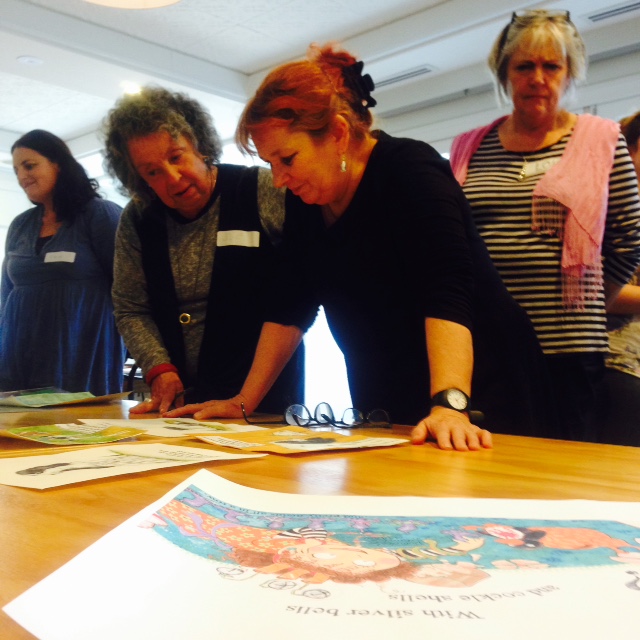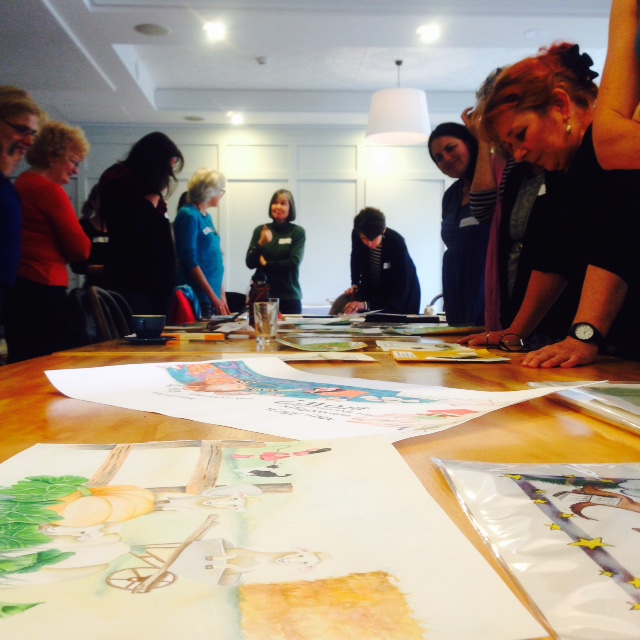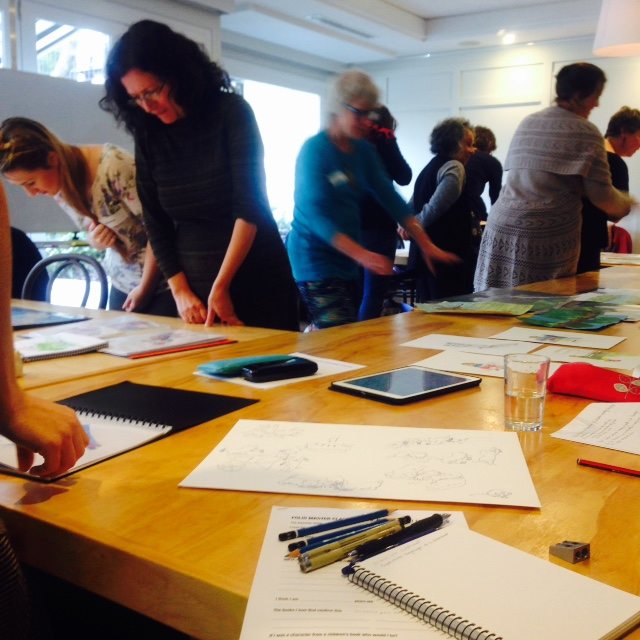We had a wonderful VIC SCBWI event in Melbourne on Saturday 13 June, with three industry professionals sharing their experience and expertise: Publisher for young children at Penguin, Jane Godwin; author and illustrator Judith Rossell and author Corinne Fenton.
Our first speaker, Judith Rossell, used PowerPoint to show what led to her multiple award winning novel, Withering-by-Sea. After a brief introduction to her early work, she talked about her interest in ‘Victoriana’ and how many of the amazing inventions that appeared in 1885, formed the background to her novel. Think telephone, electric light bulb, typewriter, bicycle, chocolate bars, compulsory schooling, heritage buildings and hotels, to name just a few. Her advice, which echoed throughout the afternoon, is to write about whatever sparks your passion, and to trust the process, because you might not come up with all the answers immediately. Above all, she emphasised the importance of careful research and well developed characters.
Our next speaker, Corinne Fenton, is known for her prize winning picture story books. However, this time she was speaking as a judge for the Primary School Dorothea Mackellar Poetry Awards. Corinne talked vast numbers of entries; some six thousand poems turned up in 2014, a large percentage coming from NSW and Victoria. This year the numbers seem to have fallen, but that may still change. We agreed that being asked to judge these awards is only for the brave hearted and thanked her profusely.
Our final speaker, Jane Godwin, is a multiple award winner for her books and also a publisher of books for young readers at Penguin Books Australia. She outlined twenty nine things she has learnt in both roles, claiming each new book presents another challenge. To condense these a little:
· Every new book ultimately reflects one’s taste.
· The book is the result of a relationship between creators and publisher.
· A schedule must be established between author and illustrator.
· People have very different ways of reading.
· She likes books to be inventive and take risks.
· Publishers and creators can’t control everything, no matter how hard they try.
· Both creators and publishers should enjoy the process.
· Know your market: education, bookshops, discount stores etc.
· She is never elated at the end of a project, always thinks it could be better.
· The writer and the publisher wear different hats.
· A book can be published in many different ways.
· No matter what the future holds, there will always be a place for paper books.
· Writing and illustrating is always hard. We are ‘compost heaps’ who use all our experiences in our work.
· Constructive criticism can be helpful. Mistakes will still happen.
· Writing what you don’t know encourages research and imagination.
· Character is everything. Without convincing characters a book will fail.
· It is important to find your own voice.
· Don’t be obsessed by markets.
· Don’t see children as all the same.
· Keep an idea or character in your head even when you aren’t creating.
All this information was appreciated by both established and emerging creators.










